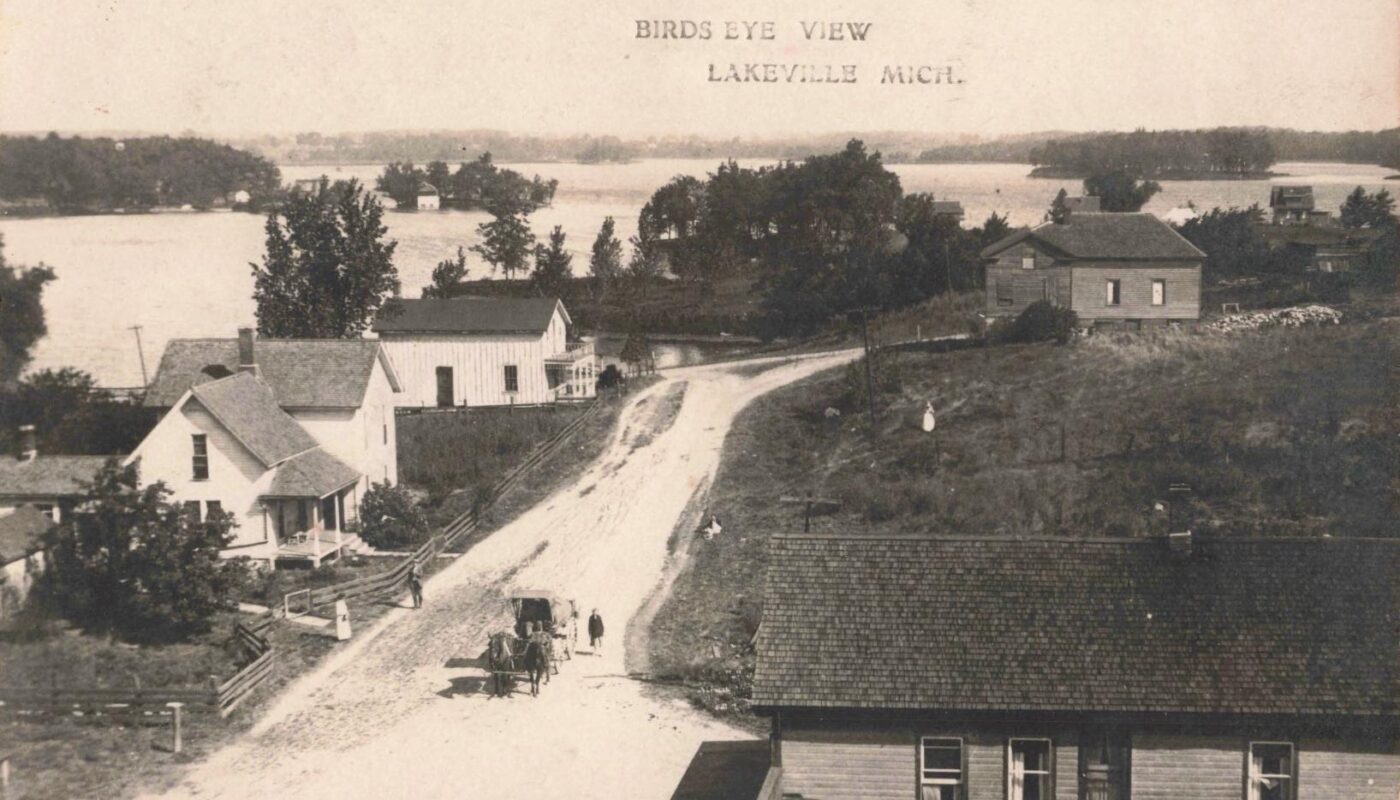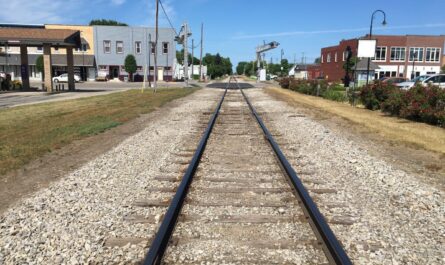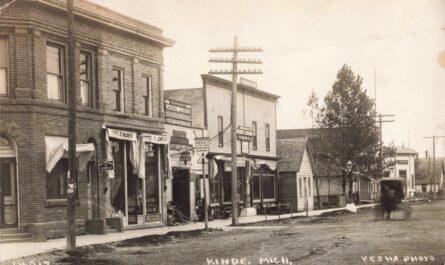Lakeville, an unincorporated village in Addison Township (northeast Oakland County), evolved from a 19th-century milling town into a modest lakeside community by 1940. In the late 1800s, Lakeville boasted a grist mill, sawmill, general store, blacksmith, and a hotel serving local farmers and travelers. The village’s prominence as a trading center declined after the 1880s, when a new railroad line bypassed Lakeville in favor of nearby Oxford and the village of Leonard. Before the Pontiac, Oxford & Northern Railroad reached Addison Township in the 1880s, Lakeville “enjoyed an enviable reputation for trade,” However, much commerce shifted to those rail-linked towns afterward. Lakeville Michigan history remained a quiet rural village, sustained by agriculture and its mills, even as surrounding areas modernized.
Video – Lakeville Michigan History
Lakeview’s Focal Point Is The Water
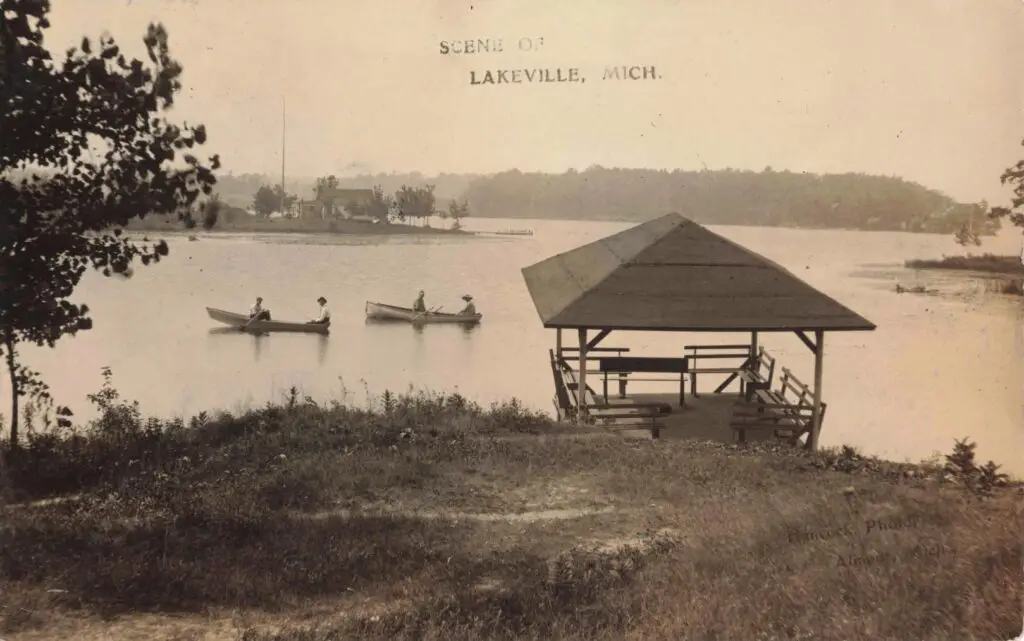
The Lakeville Lake — about 460 acres in size — was central to the community’s identity. It was originally a chain of small natural lakes merged in 1830 by a dam, creating a larger lake with irregular shores and a few islands. By the late 19th century, one island had even been improved as a picnic spot for “pleasure parties”. Durant’s 1877 History of Oakland County described Lakeville’s setting as “beautiful, almost romantic,” with high hills on the eastern shore offering views of the lake and surrounding countryside. This natural beauty set the stage for Lakeville’s later role as a summer getaway.
Seasonal Tourism in North Oakland County
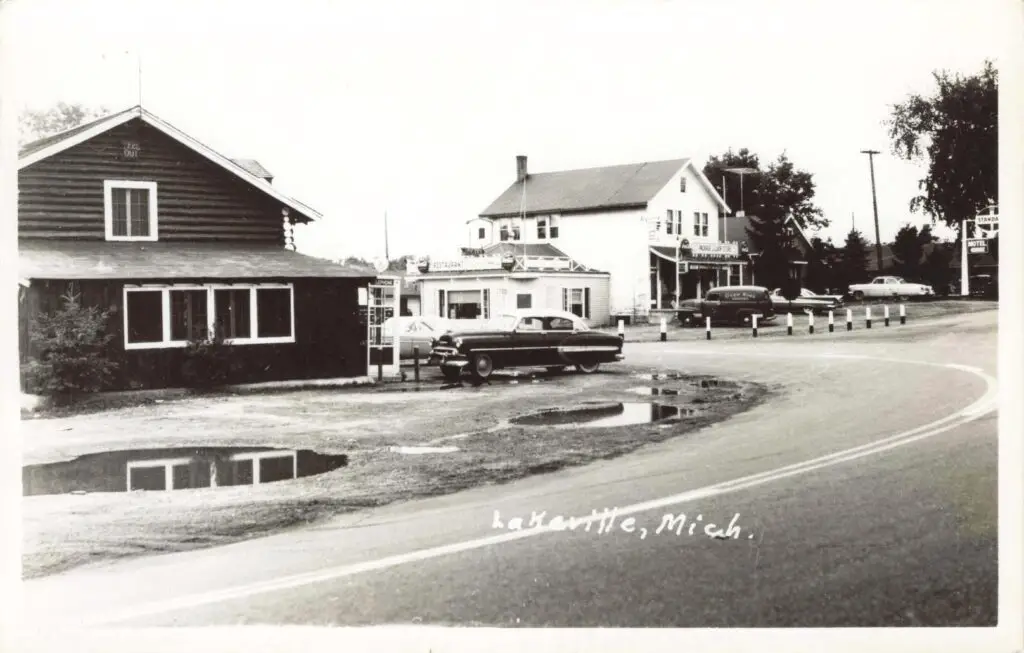
In the early 20th century, transportation and technology brought changes. The rise of the automobile made it easier for Detroit city-dwellers to visit northern Oakland County. By the 1920s, people from metro Detroit began motoring out to enjoy area lakes. Lakeville, about 40 miles from Detroit, saw more visitors and seasonal residents during this period. Although Lakeville never had a passenger rail station, local roads improved, and it was accessible via nearby towns and the growing network of “good roads.”
Lakeville Michigan History – Logging and Mills
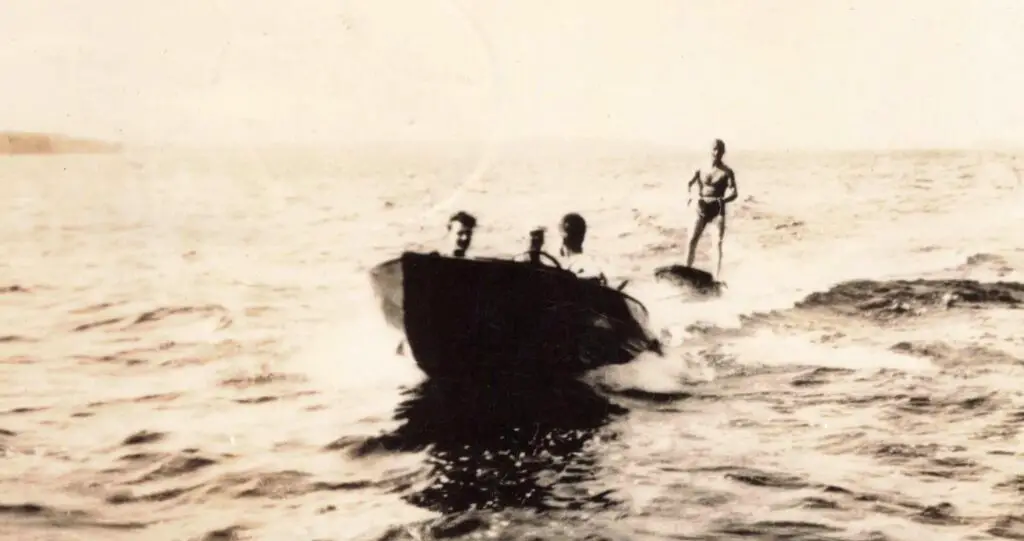
Industrial activity in Lakeville shifted around this time. The old Chamberlain/Chapel mill, which had ground grain and cut lumber since the 1830s, was repurposed in the 1920s. In 1923, a Scottish immigrant, James Dunn, purchased the mill site and transformed it into a general machine shop, sawmill, and boat-building facility. Under Dunn and his son Ceol, the Lakeville mill produced inboard motorboats and even early water-sport equipment. They crafted wooden boats and “surfboard” water skis (essentially planks to be towed behind boats) years before water skiing was a common pastime. This enterprise provided local employment and underscored Lakeville’s growing focus on recreational boating.
1930s Depression Impact on Lakeville Michigan
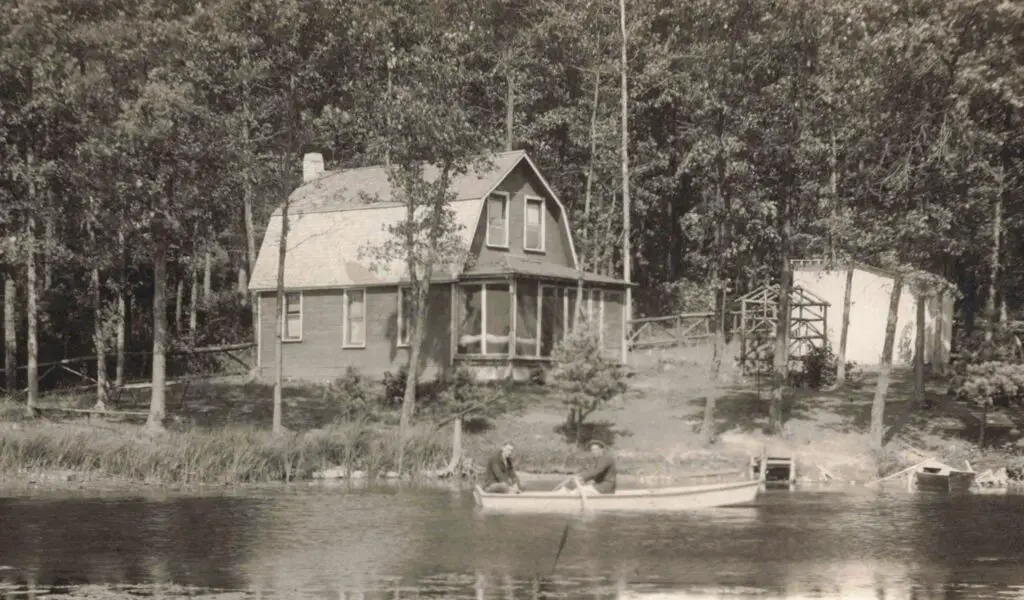
Through the 1920s and 1930s, Lakeville remained a small, close-knit community but increasingly catered to summer visitors. The village never incorporated as a city, and Addison Township’s government oversaw local services. Basic infrastructure improved gradually – for example, rural electrification would come late in the 1930s – yet Lakeville retained a tranquil, rustic character. The Great Depression of the 1930s had a modest impact; farming was still a mainstay, and many summer cottages sat quiet during the leanest years. Nevertheless, by 1940, Lakeville had established itself as a farming village and a seasonal recreational spot, laying the groundwork for the post-war tourism boom.
Influential People and Residents
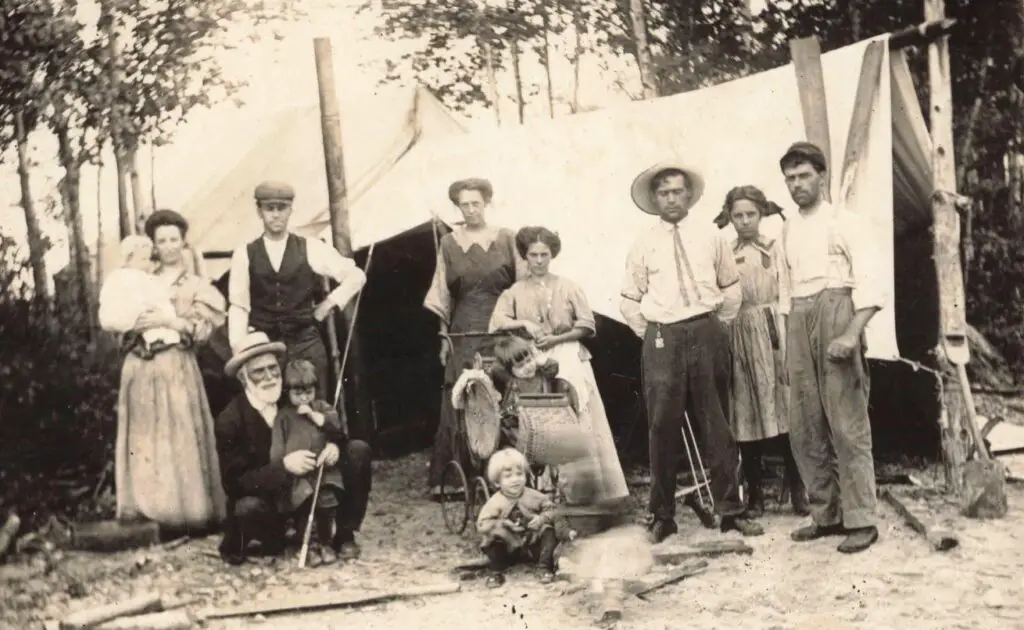
- Addison Chamberlain (1807–1880s) – Pioneer settler and namesake of Addison Township. Chamberlain built Lakeville’s first tavern, store, and post office in the 1830s, effectively founding the village. His enterprising spirit helped Lakeville grow. Even decades later, his legacy endured – notably, his former farm became the site of a major camp in 1921 (see Events below).
- Abram A. Snyder and the Snyder Family – The Snyder family was an early settler who played prominent roles in Lakeville’s 19th-century businesses and government. By the 1870s, A.A. Snyder was proprietor of the Lakeville Hotel, a key establishment serving travelers. The Snyders were community leaders whose hotel and foundry kept the village economically viable after the railroad bypassed it.
- Mark S. Brewer (1837–1901) – Born to an Addison Township pioneer family, Brewer became a U.S. Congressman in 1877. Though his political career took him beyond Lakeville, he remained a notable figure from the community in the late 19th century. His success reflected the ambition of Addison Township’s early families.
- Brigadier Samuel Withers – Michigan Salvation Army commander who founded Echo Grove Camp at Lakeville Lake in 1921. Withers oversaw the rapid conversion of Addison Chamberlain’s old farm into a summer camp for underprivileged mothers and children. Under his leadership, and with his wife as the first superintendent, the camp brought tens of thousands of visitors to Lakeville.
- James Dunn (1870s–1950s) – An engineer-entrepreneur from Scotland who revitalized Lakeville’s mill. After acquiring it in 1923, Dunn introduced manufacturing to the village, from boat-building to general machining. His innovations (including early water-ski boards) made Lakeville Lake an aquatic recreation center. Dunn’s insistence on using lake water to power his workshop later led to legal battles with cottage owners, highlighting the tension between industry and recreation.
- Cecil Billington (1874–1956) – A Detroit newspaperman and amateur botanist affiliated with Cranbrook Institute, Billington exemplified the affluent summer residents of the 1920s. He bought land on Lakeville Lake in 1922 and built a cottage called the “Little Brown House,” which became a lively retreat for friends and luminaries. Billington studied local flora (publishing Ferns of Michigan in 1949) and hosted distinguished guests like sculptor Carl Milles and publisher George G. Booth at his Lakeville property. His log books depict leisure and nature study in Lakeville’s “lake idyll.”
- Lawrence D. Buhl (1887–1938) & Cora Peck Buhl (1890–1976) – A prominent Detroit couple who established a grand summer estate in Addison Township in 1927. The Buhls purchased 1,000 acres of countryside just south of Lakeville and built an English Tudor manor designed by architect Robert O. Derrick. Known today as the Buhl Estate at Addison Oaks, their estate (with its man-made lakes and game preserve) symbolized the era’s country retreats for wealthy Detroiters. The Buhls’ presence brought prestige to the area, and their philanthropic ties (the Buhl family funded Detroit’s Buhl Building and other ventures) made them influential local landowners during the interwar years.
Notable Events and Milestones
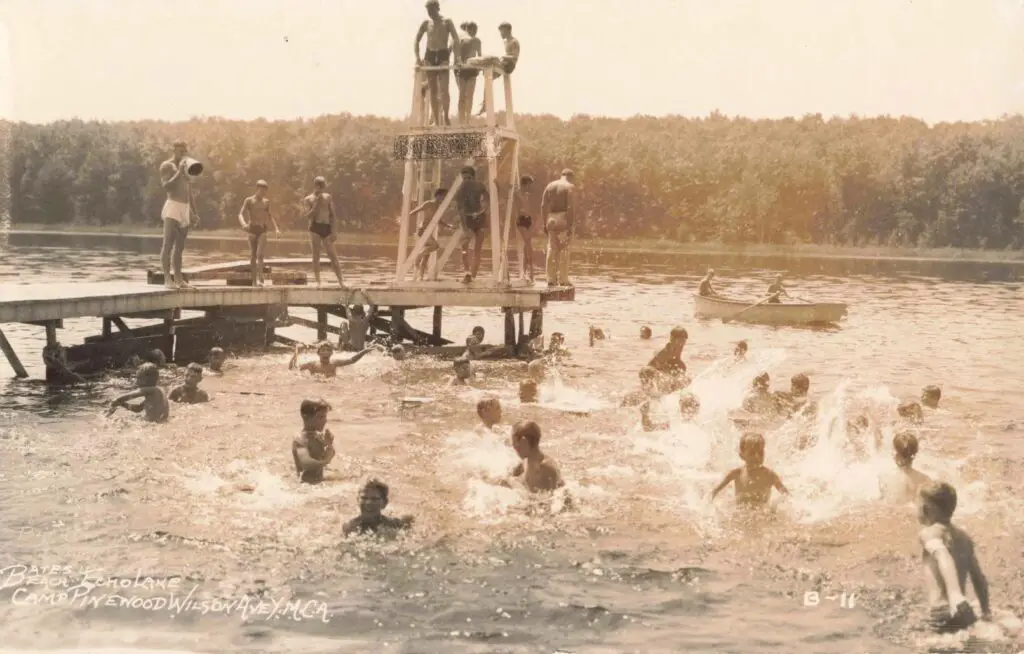
- 1882–1884: Railroad Era Begins – The Pontiac, Oxford & Northern Railroad was built through Addison Township (with a station in Leonard) in the early 1880s. This development shifted commerce away from Lakeville, as farmers could ship goods by rail from Leonard’s 1889 grain elevator. Lakeville, left off the line, saw its growth slow after this period. The village continued with stagecoach and wagon connections, but the railroad’s arrival in the region marked the end of Lakeville’s brief role as a primary trade hub.
- Late 19th Century: Village Life – In the 1880s–90s, Lakeville became a small rural village. A new town hall was built (Addison Township’s civic meetings were often held in Lakeville). A two-room schoolhouse educated local children. Social life centered on the Methodist church, the hotel tavern, and seasonal events like July 4th picnics by the lake. While no single event stands out, these years were marked by steady community-building: the telephone reached the village by the turn of the century, and the first automobiles appeared in the 1910s, linking Lakeville more closely with Oxford and Detroit.
- 1921: Echo Grove Camp Established – A significant milestone came in June 1921 with the founding of the Salvation Army’s Echo Grove Camp on Lakeville Lake’s northwest shore. Brigadier Samuel Withers led the effort to create a refuge “where many a tired mother can spend a few days for recuperative recreation”. Within weeks, carpenters erected mess halls and dormitories on the 200-acre former Chamberlain farm, and trails were blazed through the woods. That summer, the camp welcomed impoverished mothers and children from Detroit, as well as disabled WWI veterans and their families. The camp’s opening was heralded in newspapers and is credited with bringing hundreds of visitors to Lakeville each season. (It would later be named Echo Grove for how sound carries across the bowl-shaped terrain.)
- August 1922: Summer Concerts – To celebrate the camp’s success, the Detroit Salvation Army Citadel Band (a 60-piece brass band) gave public concerts at Lakeville Lake in August 1922. Crowds gathered on the lakeshore for an outdoor musical weekend, an event reported in the Oxford Leader newspaper. The band’s visit underscored Lakeville’s emergence as a regional destination – even for a weekend outing – in the Jazz Age. Such events became a summer tradition, with music, worship services, swimming, and picnics drawing visitors from nearby towns.
- 1923: Dunn’s Mill and Boat Works – In 1923, James Dunn’s purchase of the old Lakeville mill marked a turning point for local industry. Dunn’s operation, which manufactured rowboats, inboard motorboats, and innovative “surfboard” water skis, put Lakeville on the map for recreational products. This diversification helped the village economy. It also led to a community milestone: the legal case Dunn v. Lakeville Cottagers. As more cottages were built around Lakeville Lake in the 1920s–30s, owners worried that Dunn’s use of water power (which lowered the lake level) hurt fishing and boating. A protracted dispute ensued. Ultimately, the Michigan Supreme Court upheld the Dunn family’s deeded water rights, affirming their right to use the lake “as it flows” for power. Though tension lingered, the case highlighted the balance Lakeville struck between its industrial past and recreational future.
- 1927: Buhl Estate Construction – In summer 1927, construction began on the Buhl Estate just a few miles from Lakeville village. Over 30 artisans and laborers were employed to build Lawrence and Cora Buhl’s opulent 20-room manor house and landscaped grounds. The event was noteworthy locally; area residents marveled at the mansion’s Tudor architecture, marble fireplaces, and private golf greens. The Buhls often hosted Detroit society friends there. While this was a private development (not open to the public), it signaled that Addison Township was regarded as prime resort country by the late 1920s.
- 1938: Camp Expansion – Even during the Depression, Echo Grove Camp grew. In 1938, the camp built a new lakeside chapel (with an amphitheater-like hillside setting) to accommodate worship services for hundreds of campers. The chapel, which stood for decades, was one of the camp’s oldest buildings and became a local landmark. Its construction was a community effort and provided a hopeful note in hard times. By 1940, Echo Grove hosted music conservatories, Bible conferences, and youth camps, solidifying Lakeville’s reputation as a retreat center.
Historic Photos of Detroit in the 50s, 60s, and 70s
Historic Photos of Detroit in the 50s, 60s, and 70s documents what a Metro Detroiter would have experienced through those decades, from the commonplace to a visit from John F. Kennedy.
Tourism and Recreation
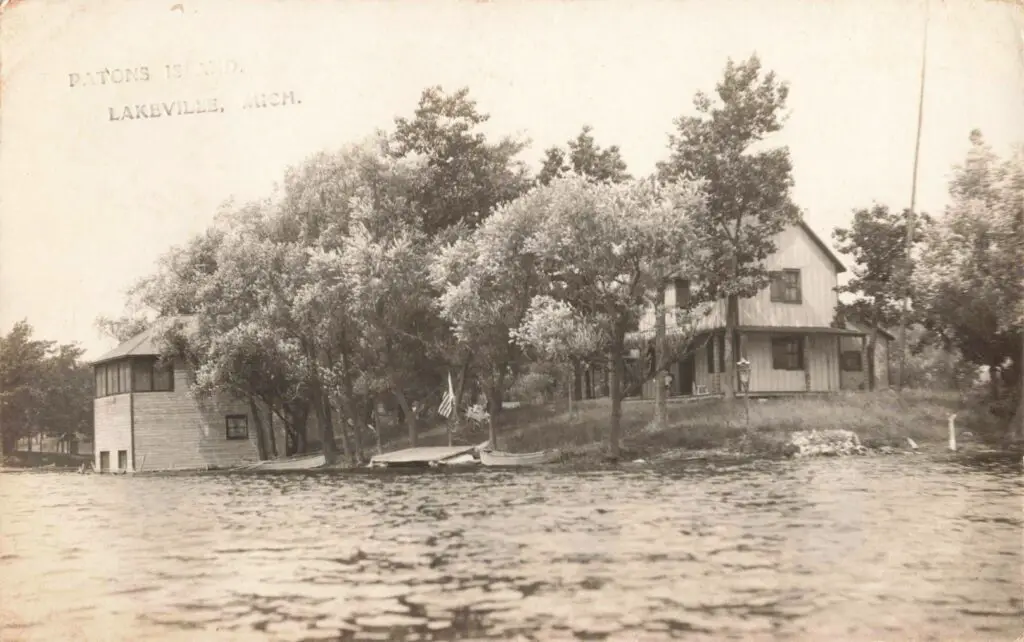
By 1880, Lakeville already had the ingredients of a tourist spot: a sizable lake, rolling wooded hills, and a convenient location in the “lake country” north of Detroit. However, organized tourism truly blossomed in the early 20th century:
- Resorts and Lodging: In the late 19th century, travelers could find lodging at Chamberlain’s old tavern-turned-inn or Snyder’s Hotel in Lakeville. These establishments were modest by later standards, but they catered to hunters, fishermen, and wagon travelers. As automobile tourism grew, residents took in boarders or rented out farmhouse rooms during the summer. While Lakeville never had a grand resort hotel, it benefited from overflow tourism from nearby Lake Orion (a larger resort town). By the 1920s and ’30s, several lakeshore cottages were informally operating as boarding houses, and a small lakeside motel was eventually built (predecessor to today’s Clearwater Resort).
- Cottages and Summer Homes: A defining feature of Lakeville’s tourist development was the proliferation of private summer cottages. Wealthy professionals like Cecil Billington built retreats on the lake in the 1920s, and many middle-class families from Detroit or Pontiac followed suit, purchasing small lots to erect rustic cabins. Billington’s “Little Brown House” became famous for its hospitality – guests enjoyed archery, lawn bowling, croquet, and fishing on the property. Such cottage colonies turned Lakeville into a seasonal community. By the 1930s, dozens of cottages ringed Lakeville Lake, creating a summertime population boom. Seasonal residents formed one of the first Lake Associations to discuss road maintenance and water levels, reflecting their investment in the area’s upkeep.
- Lake Recreation: Lakeville Lake itself was the main attraction. An all-sports lake of about 700 acres (its size before later adjustments), it offered excellent fishing and boating. Anglers caught bass, pike, and panfish in abundance. Boating ranged from tranquil rowboats to the sputter of early motorboats by the 1910s. Lakeville Lake saw some of Michigan’s earliest motorized watersports, with the Dunns’ motorboats towing people on wooden boards for fun. Swimming was popular in the lake’s shallow coves (though no formal public beach existed then). One of the lake’s islands, improved with picnic tables, was a favorite destination for excursion parties as far back as the 1870s. Local entrepreneurs would ferry visitors to the island for day-long picnics and clambakes. In winter, the frozen lake provided ice-skating and ice-cutting; blocks of Lakeville ice were harvested and stored for use in summer resorts in the era before refrigeration.
- Community Events: Lakeville leveraged its scenic lake for community gatherings. Church groups held annual camp meetings and revivals by the shore. The Echo Grove Camp, though a Salvation Army facility, also indirectly boosted tourism – every summer Sunday, local residents and tourists would attend open-air services or band concerts at the campgrounds. The village hosted an annual Lakeville Regatta starting in the mid-1930s, featuring informal boat races and a decorated boat parade around July 4th. These events drew spectators from neighboring towns. Newspapers like the Oxford Leader regularly advertised Lakeville’s summer happenings, solidifying its image as “a delightful summer retreat.”
- Infrastructure for Tourists: To serve the growing number of visitors, Lakeville saw small business developments. A refreshment stand opened by the lake in the 1920s selling ice cream, cold drinks, and bait for fishermen. A local farmer operated boat rentals, keeping a fleet of wooden rowboats for hire at a simple dock. By the 1930s, one could buy gasoline in Lakeville (a necessity for motorists and motorboats alike) at a service pump near the general store. Although rustic, these amenities made it easier for tourists to enjoy extended stays. Importantly, in 1936 Oakland County improved Rochester Road (the main route from the Detroit area) with gravel and grading, cutting travel time to Lakeville. This road work was “especially important” for opening Addison Township to more recreation seekers.
From 1880 through 1940, Lakeville transitioned from a frontier mill village into a quaint tourist destination. Its history in this era is characterized by industry and leisure: sawmills and farms coexisted with hotels and camps. Those decades’ influential people, milestone events, and recreational developments laid the foundation for Lakeville’s mid-20th-century identity as a beloved lakeside community. Visitors were drawn by the area’s natural charm, community hospitality, and the promise of rejuvenation by the water – a legacy of tourism that Lakeville Lake still enjoys today.
Sources
Historical accounts from Durant’s History of Oakland County, local newspaper archives (Oxford Leader, Lake Orion Review), the Lakeville Lake Association’s history briefs, and Cranbrook archival records. have been used to compile the above information. These sources document the rich tapestry of Lakeville’s past – from mills and railroads to cottages and camps – during the late 19th and early 20th centuries. Each piece contributes to understanding how Lakeville, Michigan made its mark as a scenic haven and community hub between 1880 and 1940.

